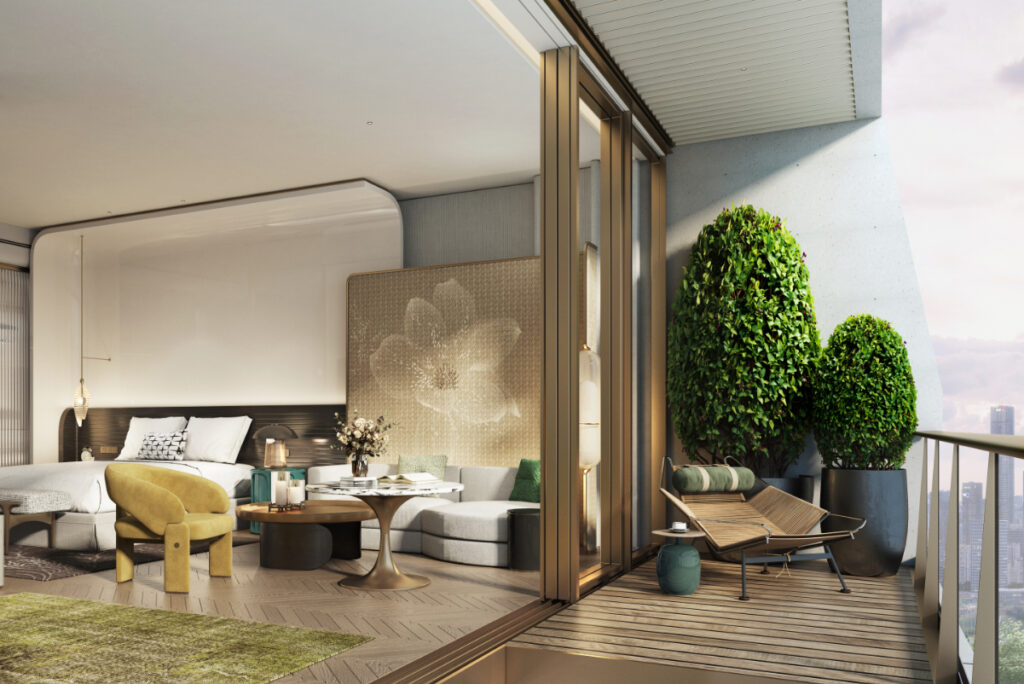Hilton is expanding its luxury brands worldwide, and using a tailored regional approach to wooing owners organically —instead of acquiring portfolios.
“The further east you go, the longer the asset is normally held because it’s usually a generational investment driven by a sense of family pride,” said Dino Michael, senior vice president and global head of luxury brands. “Obviously the further west you go, it’s more of a commercial transaction.”
In other words, in some parts of Asia Pacific, hotel brand choices are often about generational pride and legacy. Perhaps Grandpa built a great business, so now the family wants a trophy hotel to show off their success. But in the West, it’s often just another savvy real estate play driven by location, valuation, and expected return.
A Tailored Strategy by Market
- For emerging markets, Hilton uses something of a hub-and-spoke model, typically entering with a flagship brand first. It creates local infrastructure, such as warehouses, business development teams, and recruitment platforms. Then, it expands strategically, such as growing Waldorf Astoria and Conrad in Mexico first before expanding to Costa Rica and Colombia.
- Localization is key: Hilton adapts brands to market needs, like adding large wedding spaces to its meetings-focused Signia brand in India. “We retooled Signia’s meetings and events offering in Jaipur, India, which is a major wedding destination,” said Candice D’Cruz, vice president of luxury brands, Asia Pacific. “Indian weddings need bigger boxes and different, flexible spaces both indoor and outdoor, so we’ve adapted. We’ve expanded the lot size and number of keys a Signia can have, too.”
Asia Pacific Growth
- As Skift recently noted, Hilton plans to expand its luxury estate in Asia Pacific to 150 hotels, quadrupling its current portfolio. Hilton is leveraging long-standing owner relationships to diversify brand portfolios, meeting next-gen demand for lifestyle luxury brands like LXR alongside established names like Conrad.
- If you have capital in Asia, it’s not obvious you’d want to work with a Western brand like Hilton, given that much of the region’s growth will be powered by outbound travelers from countries like China and India. Western brands have few loyalty members in those source markets.
- However, while regional competitors have a stronger Asian foothold, Hilton sees room to grow, positioning itself as a fresh partner to help avoid saturation. Local owners are incentivized to add new brands to attract guest interest in variety rather than add more properties from brands already in the market, D’Cruz said.
- Hilton is pursuing markets with rising demand from high-net-worth individuals. “We’re at that phase where we’re, so to speak, following the money,” said D’Cruz. “Malaysia has seen growth in luxury travel, for example,” D’Cruz said. “In a little over a year, we’ll have our first Waldorf Astoria in the country. We have a Conrad opening by the end of next year. In Indonesia, we just opened our first LXR.”

Growth Drivers Globally
- A wide-ranging luxury portfolio lets Hilton optimally match brands to owner profiles and market opportunities, executives said.
- “If you go back just five or six years ago, we maybe didn’t have a full range of brands to fill white spaces in the market,” Michael said. “Maybe we were asking our brands to maybe flex a little too far to fit needs. We’ve since added brands, and we now have a broad enough brand portfolio that lets us make the right recommendations for a market.”
- Many family businesses are transferring wealth and asset ownership to the next generation. So Hilton is seeing demand from younger investors for more lifestyle-oriented luxury brands like LXR in addition to established brands like Conrad. “Individual or institutional owners often like to have trophy assets, the bragging rights to be able to have the first of an iconic brand in a market, especially in gateway cities,” D’Cruz said.

Finetuning Its Luxury Brands
- The company has also fine-tuned its luxury brands based on owner and guest feedback. For instance, the Waldorf Astoria brand has evolved in line with a renovation at its flagship New York property that’s set to debut in spring 2025: “We’re calling it a kind of a new era because the brand has evolved and become a true brand versus one hotel in New York that spawned a brand,” Michael said. Hilton has applied a new look and feel to Waldorf-Astorias that are set to open next year in Osaka, Punta Cacique, and Shanghai.
- “There’s a great sense of pride to being part of Hilton in some of these countries where it was the first international brand that came into those countries,” said Feisal Jaffer, global head, LXR Hotels & Resorts. “Some owners have enjoyed some of the most important occasions in their families and in their lives at Hilton hotels. Now they want own one.”
- Guy Hutchinson, president, Middle East & Africa, said Hilton is leveraging its commercial scale to win owners. “In the region, our properties average 55% to 60% Honors occupancy, so the loyalty program is a phenomenal engine,” he said. “In terms of competitive advantage, about 60% of all new signings come from existing owners.”
Accommodations Sector Stock Index Performance Year-to-Date
What am I looking at? The performance of hotels and short-term rental sector stocks within the ST200. The index includes companies publicly traded across global markets, including international and regional hotel brands, hotel REITs, hotel management companies, alternative accommodations, and timeshares.
The Skift Travel 200 (ST200) combines the financial performance of nearly 200 travel companies worth more than a trillion dollars into a single number. See more hotels and short-term rental financial sector performance.
